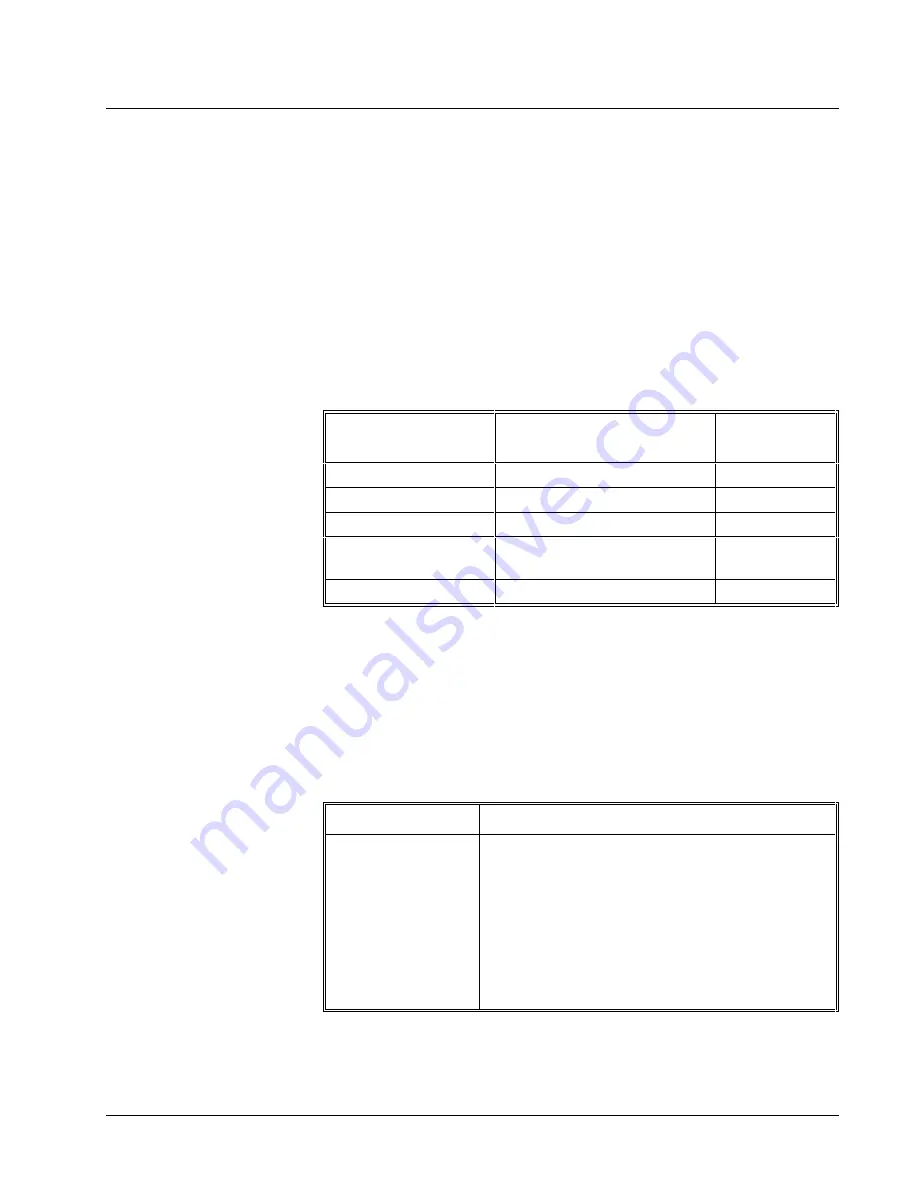
Keithley DAS-1700 Series
Using the DAS-1700 Series with DriverLINX
•
33
Connecting Signals to the DAS-1700 Series
The Keithley hardware manual describes the data and control signals for the DAS-
1700 Series and the connector pinouts for these signals. This section summarizes how
DriverLINX numbers the I/O data signals and how DriverLINX uses the control
connections for external clock, trigger, and gating inputs.
Analog Input Subsystem Signals
The Analog Input subsystem has 8 differential, 32 differential, 16 single-ended or
64 single-ended analog input connections, depending on the model and configuration
of your DAS-1700 board.
DriverLINX maps these connections to Logical Channels as shown in the following
table:
Physical Channels
Connector Name
Logical
Channels
0 – 7 Differential
CH00LO, HI – CH07LO, HI
0 – 7
0 – 31 Differential
CH00LO, HI – CH31LO, HI
0 – 31
0 – 15 Single-ended
CH00LO – CH15LO, LLGND
0 – 15
0 – 15 Single-ended,
User-common mode
CH00LO – CH15LO, U_CM_MD 0 – 15
0 – 63 Single-ended
CH00LO – CH63LO, AGND
0 – 63
How DriverLINX maps analog input hardware channels to Logical Channels.
Analog Input Pacing, Triggering and Gating Signals
Analog input tasks can use the input-pacing counter, which DriverLINX designates
as Counter/Timer Logical Channel 0. For this counter the clock source can be
internal or external.
The Analog Input subsystem uses two control signals that DriverLINX defines as an
external clock and a trigger/gate as shown in the following table:
Connector Name
DriverLINX Usage
TGIN
External trigger:
•
Digital Start Event (Post-Triggering)
•
Digital Stop Event (Pre- and About-
Triggering)
External gate:
•
•
Digital Start Event (Gating)
StockCheck.com














































